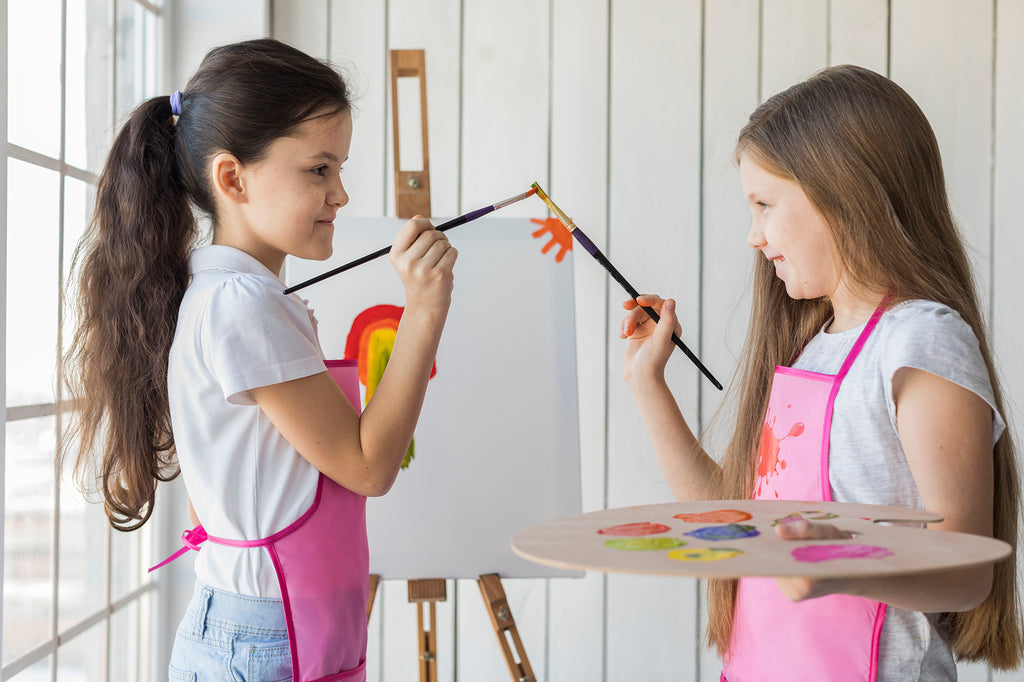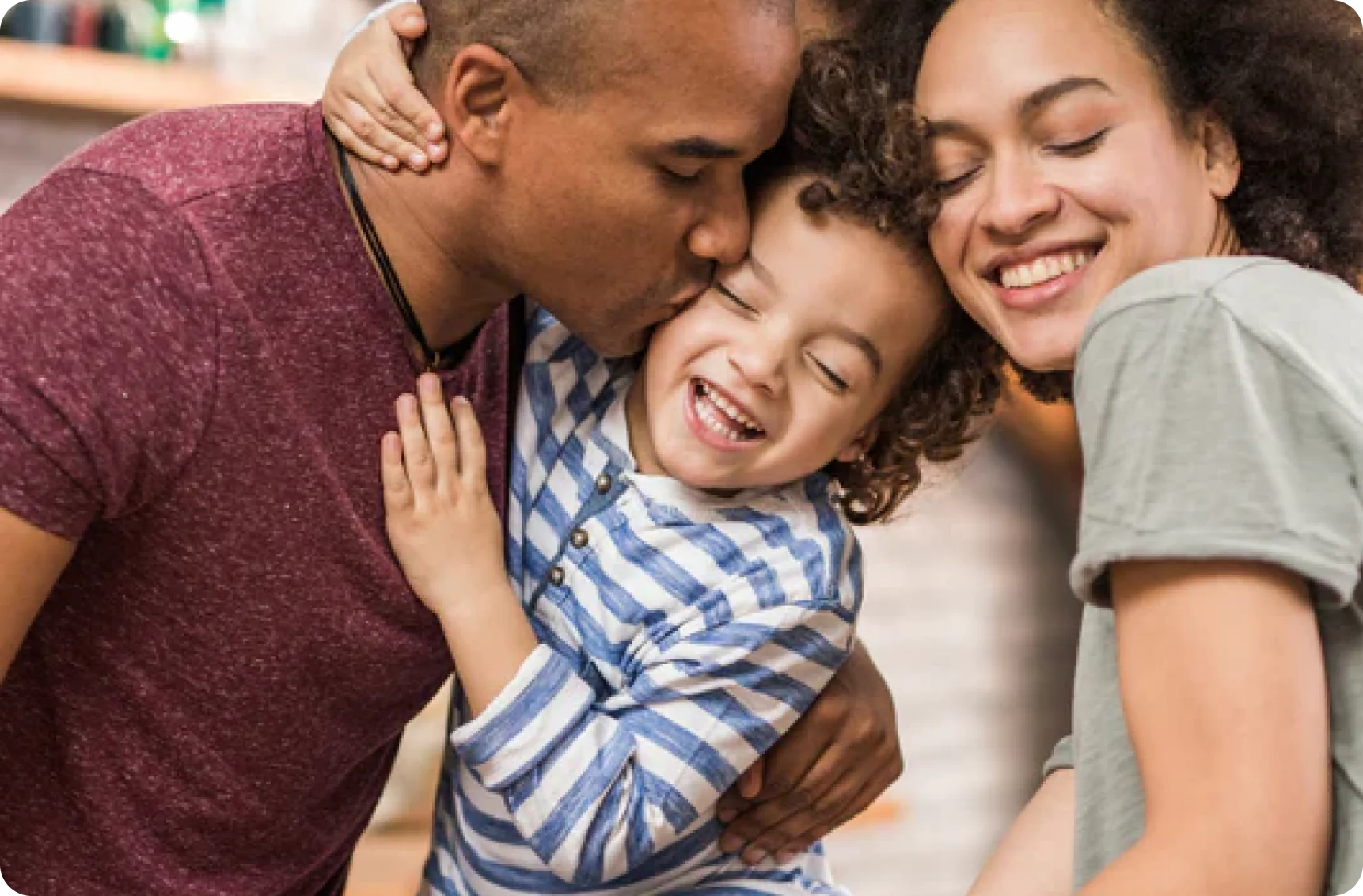Why Kids Love to Draw
Drawing is so important for children. From drawing a stick figure to putting splashes of color from the paint on their fingers, it’s something they enjoy thoroughly and that should always be encouraged.
Now the question is - why?
Science shows that drawing is an essential part of a child’s development.

It increases their imagination. Imagination is SUCH a key part of a child’s growth. When they use their imagination, they are able to create their own scenarios and play pretend, thus becoming more independent and advanced. We should all encourage imagination because it promotes freedom of expression and creativity, two positive components of childhood development.
It is an amazing way of displaying emotion. Nowadays, it is far too often that people feel that they have to hide from their emotions. Drawing is a hobby and passion that can be a positive outlet. The colors they use and the things they draw are a great way for kids to express their feelings and develop their emotional intelligence for later in life.
Their cognitive processes increase. Cognition means acquiring knowledge and understanding through thought, experience, and the senses. Drawing is an activity that requires constant thinking and feeling, so what kids choose to draw, the patterns they use, and the story they try to portray helps them develop their cognition.
Their fine motor and coordination skills increase. They will practice how to properly hold a pencil and/or crayons, and how to color inside the lines. This is important since holding a pencil correctly is a stepping stone for future skills they will learn, and it improves handwriting as well.
They will embrace creativity and confidence. Giving your child the freedom to draw means that they can create anything they want. What they draw allows you to see what’s going on in their mind, and also lets them develop in their uniqueness and originality. Always provide encouragement by asking questions about what they drew so that they feel proud of their work and are more self-confident.
Why You Should Involve Kids in Painting

Educators tell us that art encourages fine motor skills, neural development, and problem-solving abilities and that it can be used effectively to teach and understand other key subjects such as reading, writing, math, and science.
Therapists tell us that art is valuable because it allows children to make sense of their world, to cope with big emotions in a safe way, and gives them critical sensory input.
Artists tell us that art is important for its own sake—as a source of beauty and expression, as well as simply for the process of creation.
Kids tell us that art is a fun activity they enjoy.
Parents tell us that art is vital to their families because it keeps everyone happy, engaged, and helps with difficult daily transitions.
Benefits of Painting

Emotional Development: Creative play promotes social and emotional development by integrating feelings with tasks. Ask your child to paint, draw, or tell a story about how they’re feeling. These types of activities help children to non-verbally express their feelings. In time, children will learn how to express their feelings safely and creatively, allowing them to integrate into social settings and regulate their behavior more appropriately.
Social Development: Children can grow and increase their social development when given opportunities to play and interact with peers. Singing, dancing, playing dress-up, and other forms of imaginative play are a few areas where children are able to grow and develop basic communication and social interaction skills.
Intellectual Development: Through creative play, children can learn important problem-solving skills. Reading, for example, gives children the opportunity to express their imaginations and explore a world outside of their own, helping to improve both intellectual and cognitive skills. This also forms the basis of reading comprehension and retention and sets the tone for solving more complex problems as they grow and develop.
Physical Development: Whether your children are dancing to the rhythm of their own beat, or exploring the great outdoors, creative play helps to develop gross and fine motor skills, coordination, and control. Building fine motor skills requires practice and sets the stage for improving hand eye coordination and muscle memory.
5 Reasons Why Art Makes The Best Gift

1. Buying and gifting art shows thoughtfulness. It shows you cared enough to not buy the same mass-produced product anyone can buy.
2. Giving art is environmentally friendly. Art is not mass-produced and has less of an environmental impact compared to mass-produced consumer products.
3. Giving art has the potential to support your local economy. Every artist is a small business and artists live and work in virtually every community. Buying art directly from local artists or commissioning them for a custom piece helps their small business and your local economy thrive.
4. Buying and giving art demonstrates real meaningful support for the arts. Buy from local artists if you think The Arts are culturally important.
5. When shopping for kids’ gifts, buying and giving age appropriate art related gifts can be inspiring and educational for them and the whole family.
Wrapping it Up
Working on rock painting projects and making crafts with painted rocks is a great way to get creative, and is a wonderful meditative art activity for both children and adults.
Providing children with creative opportunities for play will allow them to develop these important skills as well as provide them with the opportunity to explore and learn about the world around them.

Provide opportunities for your children to be creative.
Want your child to get the most out of making art? Start involving them in art with Rock Painting Activities.



